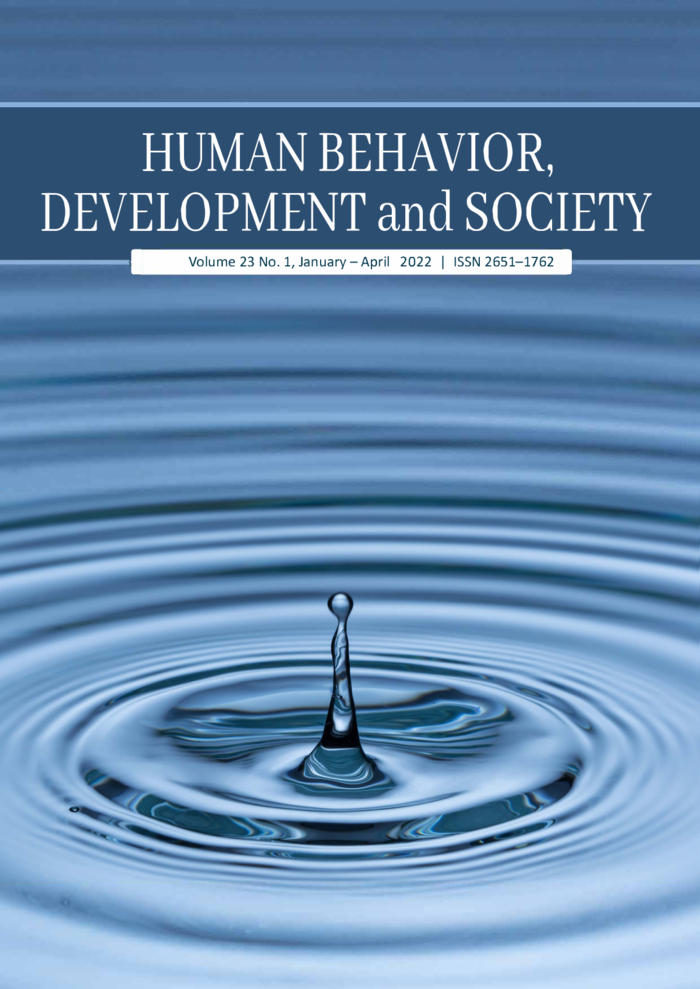The Intangible Impacts of Mass Running Events on Communities–Evidence from Thailand
Main Article Content
Abstract
The increase of mass running events and numbers of running participants confirms the arrival of a running boom in many countries around the world, including Thailand. Despite the increasing popularity in recreational running and running events, research related to running events as small-scale events and their impacts remain scarce. Thus, in this study the aim was to examine the impacts of mass running events on the community with special attention on intangible impacts. A qualitative research approach and qualitative content analysis were applied. Based on in-depth interviews, this study concluded that besides tangible economic and tourism related impacts, mass running events generate diverse intangible benefits including creating community pride and unity. This creates a trickle-down effect and forms a new sports culture, develops and enhances public spaces and infrastructure, affords opportunities for knowledge sharing and business start-ups. The limitation of this study was its generalizability and comparability of findings, as the findings are derived primarily from key informants closely associated with the organization of mass running events. Future research should explore other research approaches that might better account for the impacts of mass running events.
Article Details

This work is licensed under a Creative Commons Attribution-NonCommercial-NoDerivatives 4.0 International License.
Copyright: Asia-Pacific International University reserve exclusive rights to publish, reproduce and distribute the manuscript and all contents therein.
References
Agrusa, J., Tanner, J., & Lema, D. (2006). Japanese runners in the Honolulu Marathon and their economic benefits to Hawaii. Tourism Review International, 9(3), 261–270.
Allen, J., O’Toole, W., McDonnell, I. & Harris, R. (2002). Festival and special event management. John Wiley & Sons.
Carlsen, J., Getz, D. , & Soutar, G. (2000). Event evaluation research. Event Management: An International Journal, 6(3), 247–257.
Coleman, R. J. (2004). Flora London Marathon 2000: The economic legacy. Journal of Hospitality and Tourism Management, 10, 51–57.
Coleman, R. J. (2010). The hidden benefits of non-elite mass participation sports events: An economic perspective. International Journal of Sports Marketing & Sponsorship, 12(1), 24–36. http://shura.shu.ac.uk/id/eprint/5117
Dwyer, L., Mellor, R., Mistilis, N., & Mules, T. (2000). A framework for assessing “tangible” and “intangible” impacts of events and conventions. Event Management: An International Journal, 6(3), 175–189.
Flick, U., Kardorff, E. V., & Steinke, I. (Eds.) (2004). A companion to qualitative research. Sage.
Glaser, B. G., & Strauss, A. (1967). The discovery of grounded theory. Aldine.
Gratton, C., & Preuss, H. (2008). Maximizing Olympic impacts by building up legacy. The International Journal of the History of Sport, 25(14), 1922–1938.
Harding, A. (2014, October 27). What is the difference between an impact and an outcome? Impact is the longer term effect of an outcome. Impact of Social Sciences Blog. LSE. https://blogs.lse.ac.uk/ impactofsocialsciences/2014/10/27/impact-vs-outcome-harding/
Lincoln, Y. S., & Guba, E. G. (1985). Naturalistic inquiry. Sage.
Maening, W. (2003). Zur regionalwirtschaftlichen Bedeutung der SCC Läufe unter besonderer Berücksichtigung des real BERLIN-MARATHON [The economic meaning of the SCC running events, with special focus on the real Berlin-Marathon].BMW Berlin Marathon. Begutachtungen, Universität Hamburg, Germany. https://www.bmw-berlin-marathon.com/news-center/newsarchiv/detail/zur-regionalwirtschaftlichen-bedeutung-der-scc-laeufe/
Merriam, S. B. (2009). Qualitative research: A guide to design and implementation. Jossey-Bass.
Minnaert, L. (2012). An Olympic legacy for all? The non-infrastructural outcomes of the Olympic Games for socially excluded groups (Atlanta 1996–Beijing 2008). Tourism Management, 33(2), 361–370.
Misener, L., & Mason, D. S. (2006). Creating community networks: Can sporting events offer meaningful sources of social capital? Managing Leisure, 11(1), 39–56.
Misener, L., Taks, M., Chalip, L., & Green, B. C. (2015). The elusive “trickle-down effect” of sport events: Assumptions and missed opportunities. Managing Sport and Leisure, 20(2), 135–156.
Murphy, N. M., & Bauman, A. (2007). Mass sporting and physical activity events: Are they “Bread and circuses” or public health interventions to increase population levels of physical activity? Journal of Physical Activity and Health, 4, 193–202.
Olberding, J. C., & Olberding, D. J. (2014). The social impacts of a special event on the host city: A conceptual framework and a case study of the Cincinnati Flying Pig Marathon. International Journal of Hospitality and Event Management, 1(1), 44–60.
RunRepeat. (2021, August 6). Marathon statistics 2019 worldwide. https://runrepeat.com/research-marathon-performance-across-nations.
Schreier, M. (2012). Qualitative content analysis in practice. Sage.
Skinner, J., Zakus, D. S., & Cowell, J. (2008). Development through sport: Building social capital in disadvantaged communities. Sport Management Review, 11(3), 253–275.
Spilling, O. R. (1998). Beyond intermezzo? On the long-term industrial impacts of mega-events: The case of Lillehammer 1994. Festival Management and Event Tourism, 5(3), 101–122. https://www.researchgate.net/ publication/233677228_Beyond_Intermezzo_On_the_Long-Term_Industrial_Impacts_of_Mega-Events_ The_Case_of_Lillehammer_1994
Thaihealthreport. (2020). Running boom and the boom of sport business. https://www.thaihealthreport.com/ event256309.
Van Bottenberg, M., Hover, P., & Scheerder, J. (2010). Don't miss the next boat. Changes and challenges of the second wave of running for European Athletics' member federations. Utrecht School of Governance, Utrecht University, Netherlands.


